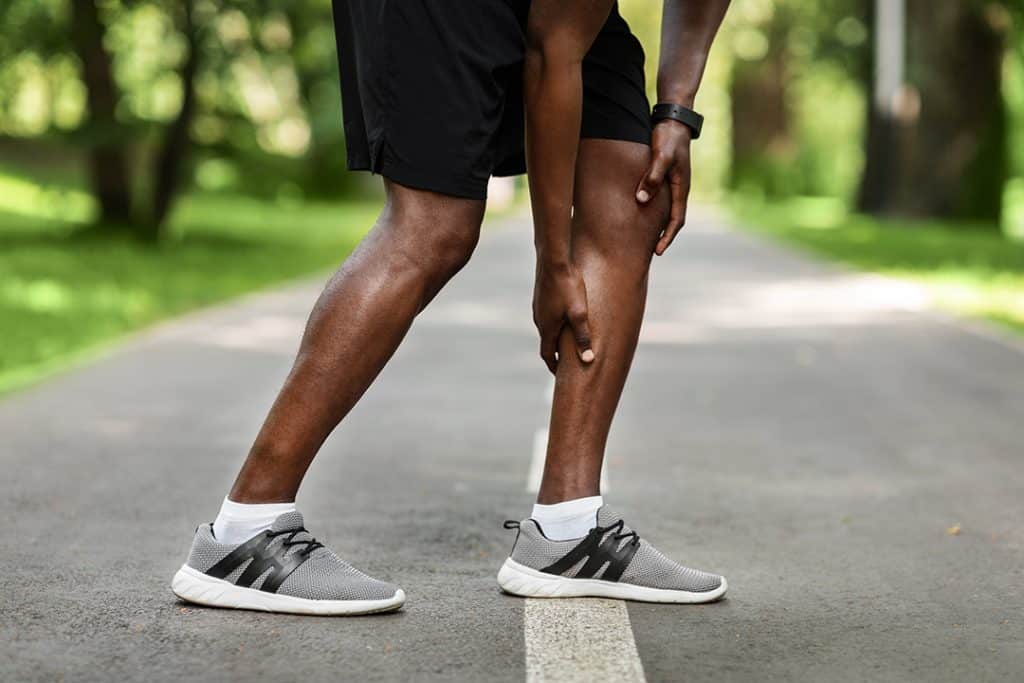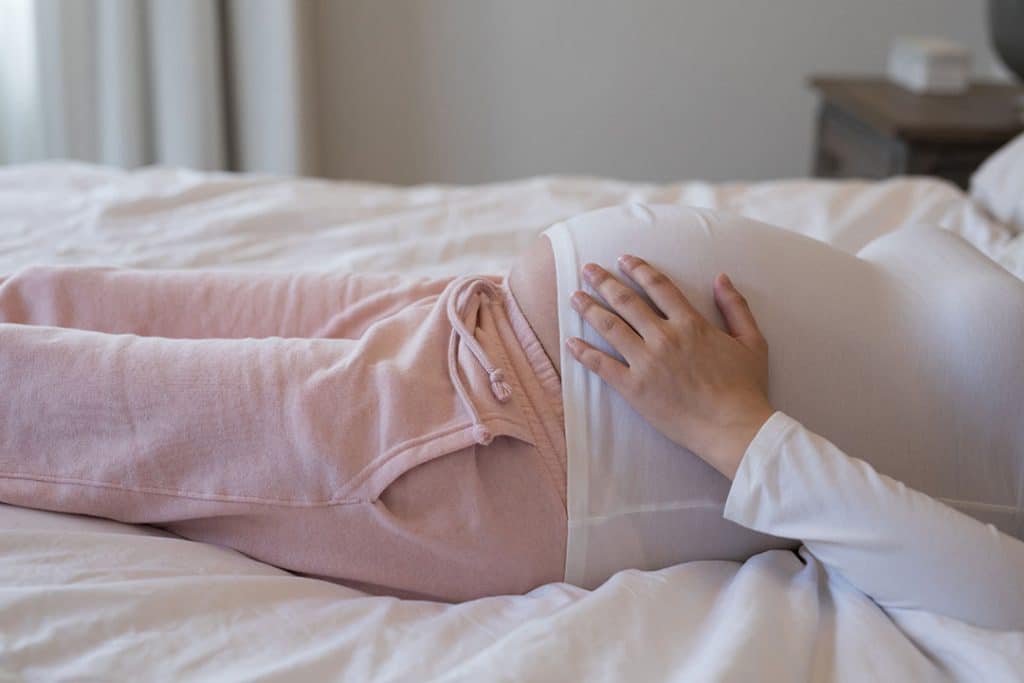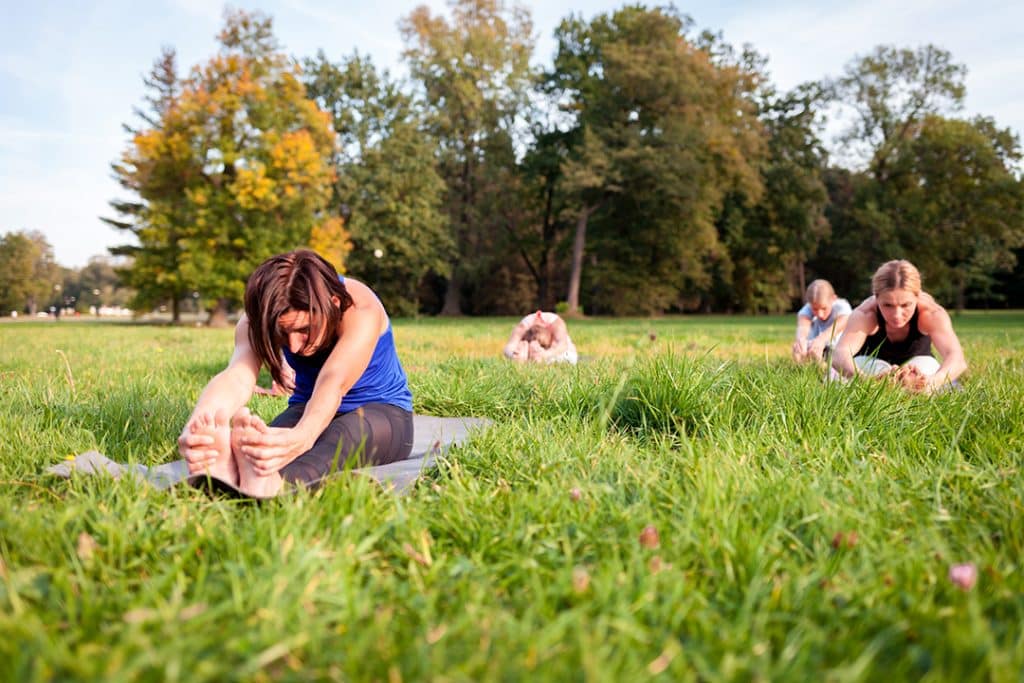Leg cramps or charley horses can happen to anyone – at night or during the day – and leave you aching for days. Here’s how to prevent them.
Picture this: you’ve drifted off into a peaceful sleep and are enjoying a good night’s rest. Until suddenly, you’re jolted awake by a sharp, searing pain in your leg. Yikes!
If this sounds familiar, you’ve likely experienced a charley horse, or leg cramp. These unexpected and painful muscle cramps can disrupt your sleep and leave you aching the next day. But don’t worry—there are effective ways to prevent them.
With a combination of chiropractic care and other smart habits for muscle health, you can prevent those cramps and get the rest you need.
What Are Leg Cramps?

Leg cramps, often referred to as charley horses, are sudden, involuntary muscle contractions that can cause intense pain. These cramps usually spring up in the calf muscles but can also affect muscles in the thighs and feet.
A leg cramp can last anywhere from a few seconds to several minutes, and the muscle may feel tender and sore for hours or even days afterward.
So, what’s happening in the muscle from a scientific perspective? Leg cramps are usually the result of spontaneous muscle contractions. Muscles are made up of fibers that contract and relax in response to electrical signals from nerves – this is contraction and relaxation is what allows you to move.
A cramp, however, occurs when these muscle fibers contract but don’t relax. There are a few different issues that can cause this…
> Electrolyte Imbalance
Electrolytes, such as potassium, sodium, calcium, and magnesium, are minerals that carry an electric charge and are needed for proper muscle function. They help transmit the electrical signals that allow your muscles to contract and relax. An imbalance in these electrolytes can disrupt normal muscle function and lead to cramps. For instance, a nutrient deficiency that causes low levels of potassium and magnesium is a particularly common underlying cause of muscle cramps.
> Dehydration
Water is essential for nearly all body processes – including proper muscle function. Dehydration reduces your blood volume, which means less oxygen and nutrients are delivered to the muscles. This can cause the muscles to become less supple and more prone to cramping. Dehydration can also trigger an electrolyte imbalance that leads to cramps.
> Muscle Fatigue and Overuse
When muscles are overworked or put under stress, they get fatigued and may cramp up. This is common in athletes who engage in intense physical activity without adequate rest or in those who perform repetitive tasks.
> Poor Blood Circulation
Good blood circulation is crucial for delivering oxygen and nutrients to muscles and removing waste products. Without enough blood flow, oxygen doesn’t get to the muscles which makes them more susceptible to cramping. Older adults are particularly at risk, as circulation naturally declines as we age.
> Prolonged Inactivity
Staying in one position for an extended period, such as sitting or standing for long hours, can also cause leg cramps. Inactivity can lead to the muscles becoming tight and more prone to sudden contractions. This is often why leg cramps occur at night, as muscles remain in a static position for several hours during sleep.
> Neurological Factors
Some neurological conditions and disorders can also lead to leg cramps. Think of conditions such as Parkinson’s disease, multiple sclerosis, or peripheral neuropathy – these all disrupt the normal signaling between nerves and muscles and can put you at greater risk of experiencing leg cramps.
Who Gets Charley Horses?

Anyone can experience leg cramps, but they can be common in certain groups.
Athletes, for insurance, often get cramps due to the intense and repetitive strain on their muscles. But you don’t have to be a pro to develop a cramp – even long periods of standing, walking, or repetitive activities can stress your muscles and lead to cramping.
Older adults are also more prone to cramps because of natural muscle loss and reduced activity levels. Even pregnant women frequently experience leg cramps; as the body quickly shifts, it can affect healthy blood circulation and put increased pressure on leg muscles.
Why Do Charley Horses Often Happen at Night?
Charley horses tend to strike at night when our muscles are relaxed and we’re less active. During sleep, our legs stay in one position for extended periods, which can cause muscles to contract and cramp. Blood circulation can also slow while we’re laying down, which could be why leg muscles get stiff or spasm.
What You Can Do to Ease a Leg Cramp?

Before we get into how to prevent leg cramps, let’s learn what you can do if one strikes. While the pain from a leg cramp will eventually go away, there are some things you can do to speed up the relaxation process and prevent another spasm.
If you’re in the midst of a painful leg cramp, try these tips for quick relief:
> Stretch and Massage
Gently stretching and massaging the cramped muscle can trigger it to relax out of its contracted state. To release a calf cramp, straighten your leg and flex your foot upwards, then massage the muscle with firm (but not painful) pressure.
> Warm it Up
If your cramp isn’t easing up after a few minutes of massage, look to heat for help. Wrapping the leg in a warm towel or heating pad can improve circulation, ease the muscle, and stop the cramp.
> Hydrate
Drinking a glass of water can help promote blood circulation and rehydrate stiff and spasmed muscles. Keep a glass by your bedside for quick relief!
8 Ways to Prevent Leg Cramps

No one wants to wake up in the middle of the night in pain, which is why preventing leg cramps in the first place is your best bet. The good news is that preventing issues like a charley horse isn’t complicated – it just takes some proactive self-care.
1. Stay hydrated.
Dehydration is one of the most common causes of leg cramps, yet so easy to avoid. Make sure you drink plenty of water throughout the day, especially if you’re active or live in a hot climate. Proper hydration helps maintain electrolyte balance and blood circulation, both of which are essential for muscle function (and banishing cramps). Try coconut water or a healthy lemonade for added electrolyte support.
2. Maintain muscle health with regular chiropractic care.
You may think of chiropractic care for managing pain conditions like neck pain or herniated discs. But did you know it can also significantly ease and prevent leg cramps? Chiropractic supports the proper alignment of your spine and improves your nerve function, while also helping to enhance muscle health. Together, these benefits reduce the frequency of cramps and muscle spasms.
3. Banish nutrient deficiencies with a balanced diet.
Nutrient deficiencies are common if you eat a predominantly processed food diet. But, the essential nutrients found in whole foods are crucial for health and preventing leg cramps. Eat more foods high in potassium, calcium, and magnesium, such as bananas, sweet potatoes, spinach, and yogurt. Or, get a fully personalized diet plan from one of our functional nutritionists to target your body’s unique needs.
4. Enhance your electrolyte balance.
It can be a challenge to get all the necessary nutrients you need in a day from diet alone. To stay on top of leg cramps, turn to a magnesium supplement for added preventative support. Magnesium plays a crucial role in muscle function and can help prevent cramps. Aceva Triple Mag is our choice – it’s a high-quality supplement that provides a blend of three essential and digestible forms of magnesium, ensuring you get the most out of every dose.
5. Stay active with regular exercise.
Leg cramps can be triggered by either too much or too little activity. Stay balanced with regular, moderate exercise that keeps your muscles strong and flexible. Focus on exercises that stretch and strengthen your leg muscles, such as walking, swimming, or yoga.
6. Don’t skip your warm-up or cool-down
While you’re at it, make sure to warm up and cool down before and after exercising. Stretching before a workout can prepare your muscles for activity, while cooling down helps them relax and recover to reduce the risk of cramps.
7. Make time to rest and avoid overdoing it.
Pushing your muscles too hard is a recipe for cramps. Listen to your body and avoid overexerting yourself, especially during exercise. Gradually increase the intensity and duration of your workouts to give your muscles time to adapt.
8. Wear the right shoes.
Are your charley horses related to your fashion choices? Wearing shoes that don’t fit or cramp your feet are more likely to lead to foot or leg cramps. Instead, go for function over form and choose supportive shoes, especially if you spend long hours standing or walking. Footwear that provides good arch support and cushioning is even better to reduce muscle strain.
Keep Cramps Away with Chiropractic

Leg cramps and charley horses can be frustrating to deal with. Along with irritating pain, they can also rob you of precious sleep and leave you feeling exhausted. Thankfully, they’re relatively easy to manage with proper self-care and the guidance of a trusted chiropractor.
At AlignLife, we help you overcome leg cramps with a holistic approach. From chiropractic care and massage to personalized diet and supplementation, we can help you significantly reduce your nighttime leg cramps and eventually eliminate them.
Don’t let leg cramps cramp your style —take the next step to improving your muscle health and enjoying restful, cramp-free sleep by scheduling your visit to an AlignLife Center today.



